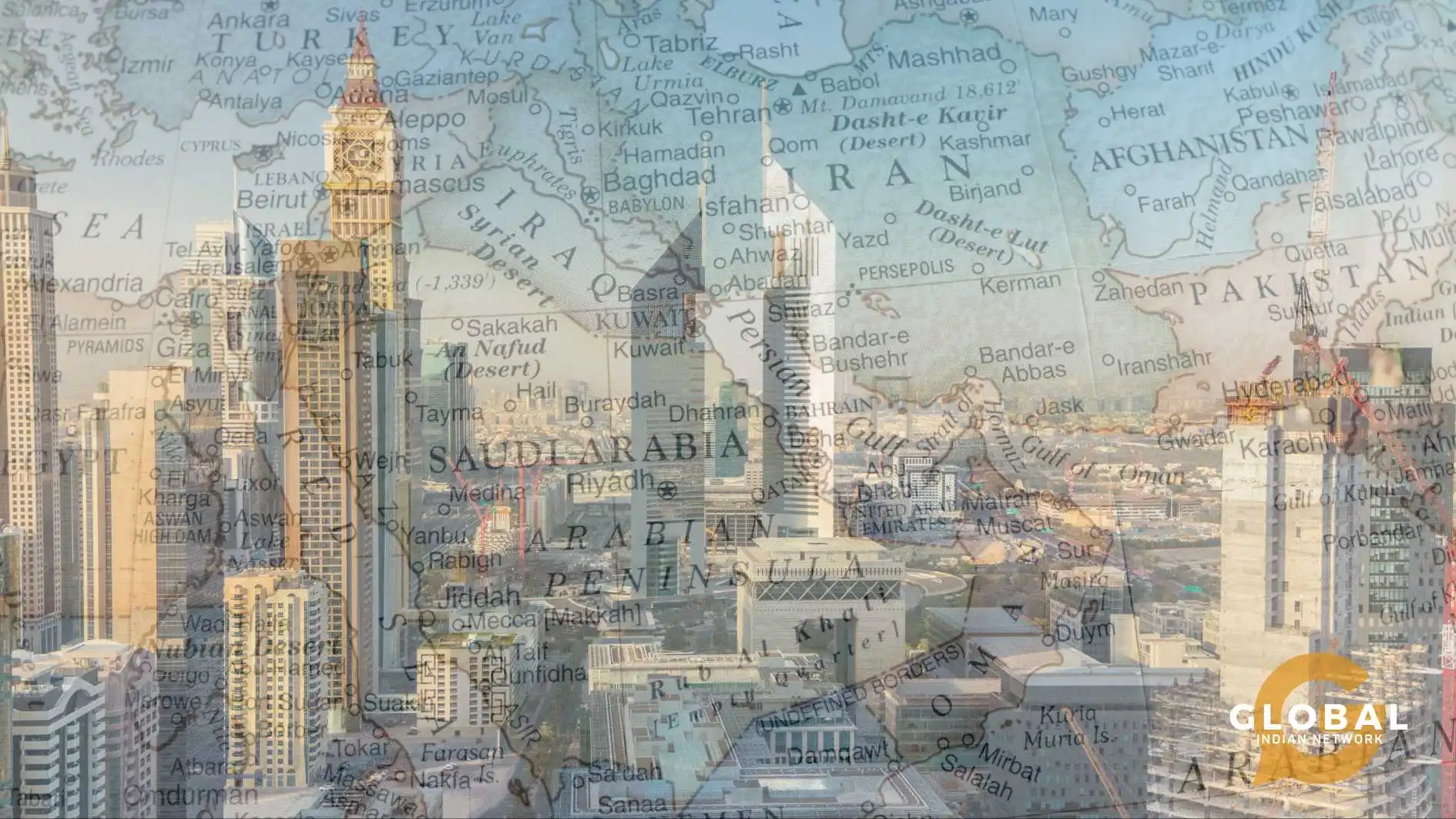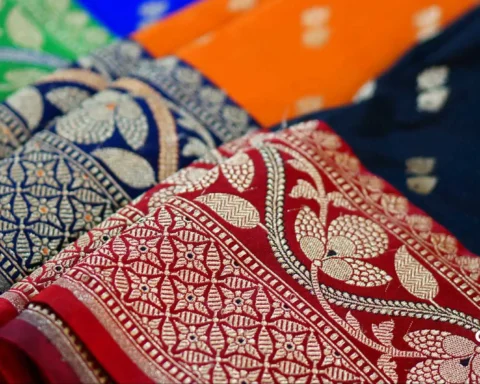On a bustling morning at Mumbai’s Nhava Sheva port, a shipment of premium Cambodian rice is being carefully loaded onto ships bound for Dubai. Overseeing the process is Ravi, an Indian logistics expert whose grandfather once traded spices along the same maritime routes. As he chats with his Cambodian business partner over a cup of chai, they marvel at how their ancestors’ journeys—fueled by ambition and adaptability—still echo through today’s globalized trade networks.
This modern encounter is more than a business transaction; it’s a living testament to the powerful legacy of India’s vast diaspora. Throughout centuries, global Indians have not only built bridges between cultures but also created corridors of commerce linking Asia, Africa, and the Middle East. Today, as Cambodian products seek to reach new markets, India stands at the crossroads, offering unmatched expertise, logistical prowess, and a trusted network, transforming ancient trade routes into thriving modern partnerships.
This article examines current trends and explores potential actions to achieve a win-win situation for all stakeholders.
Table of Contents
India as a Gateway for Cambodian Products to Africa and the Middle East
India’s emergence as a commercial powerhouse is not just about its domestic economy or growing bilateral trade; its global diaspora and historic networks now position India as a strategic gateway for third-country products—especially Cambodian goods—seeking access to Africa and the Middle East. As we analyze this evolving trade corridor, the phenomenon of ‘Global Indians’ provides both the historical context and the contemporary muscle enabling this partnership.
The Global Indian Phenomenon: Background and Influence
India boasts the largest diaspora in the world, with over 18.5 million Indians living abroad and accounting for 6% of all international migrants as of 2024. The total Indian diaspora—including both Non-Resident Indians (NRIs) and Persons of Indian Origin (PIOs/OCIs)—is approximately 35.42 million. This diaspora’s reach spans the Middle East, Africa, Europe, North America, and Southeast Asia and is characterized by high educational attainment, entrepreneurial vigor, and civic integration. Over decades, Indians have excelled in building businesses, fostering intercultural diplomacy, and facilitating trade—creating ‘networks of influence’ that have proven invaluable for international commerce.
This global reach is not coincidental. The Indian government has maintained regular engagement with the diaspora, elevating their status as economic and cultural bridge-builders. Renowned global Indian CEOs and entrepreneurs have further burnished the image of Brand India, fostering trust and open markets across continents. As a result, Indian-origin professionals and businesses are uniquely equipped to connect emerging markets, facilitate cross-border ventures, and drive partnership opportunities.
Cambodia and India: The Bilateral Platform
The India-Cambodia trade relationship has seen remarkable growth. Bilateral trade surged to nearly $435 million in 2023–2024, with Cambodian exports to India—mainly textiles and agricultural products—rising by over 50%, while Indian exports to Cambodia primarily consist of pharmaceuticals, machinery, and technological goods. India currently ranks as Cambodia’s 18th-largest trading partner, reflecting strong momentum and a positive trade surplus for Cambodia.

Cambodia–India Bilateral Trade Snapshot (2023–2024)
Total Trade Volume
- $403.79 million in 2023–2024
- Up from $366.44 million in 2022–2023
- Reflects steady growth and deepening economic ties
Other notable exports include cereals, electrical machinery, and essential oils.
Cambodian Exports to India
Cambodia exported around $285 million worth of goods to India in 2023–2024.
These exports have surged, with Cambodian shipments to India rising by over 50% year-on-year, driven by demand for affordable textiles and agri-products.
Here’s a detailed sector-wise breakdown of Cambodia’s exports to India in 2023, based on the latest trade data.
Cambodia’s Exports to India (2023)
| Sector | Export Value (USD) |
| Electrical & Electronic Equipment | $158.09 million |
| Vegetable Oils & Fats | $50.88 million |
| Apparel (Knit or Crocheted) | $19.93 million |
| Organic Chemicals | $18.75 million |
| Footwear | $17.92 million |
| Apparel (Not Knit or Crocheted) | $4.06 million |
| Machinery & Boilers | $4.64 million |
| Leather Goods & Travel Items | $2.66 million |
| Fruits, Nuts, Citrus Peels | $3.41 million |
| Vehicles (Non-Rail) | $2.20 million |
| Other Textile Articles | $1.93 million |
Observations
- Electrical equipment dominates, accounting for over 72% of the total export value.
- Vegetable oils and textiles/footwear are strong runners-up, reflecting India’s demand for affordable agri-products and garments.
- Organic chemicals and machinery suggest growing industrial linkages.
- The diversity of exports — from apparel to leather goods — signals Cambodia’s expanding manufacturing base and India’s openness to sourcing from ASEAN.
India’s Exports to Cambodia
India’s exports to Cambodia were around US$187 million during 2024.
Strategic and Cultural Ties
- India has extended lines of credit and grant assistance for Cambodian development projects in infrastructure, IT, and education.
- Restoration of Angkor Wat and Ta Prohm temples underscores India’s soft power diplomacy.
- Cambodia is part of India’s Mekong-Ganga Cooperation and Act East Policy, enhancing cultural and economic engagement.
Emerging Opportunities
- Potential Indian exports: electrical machinery, cotton yarn, iron & steel, paper products, and plastics
- Cambodia’s CEPA with the UAE opens indirect trade routes via India to Gulf markets.
- Indian firms are exploring investment in Cambodia’s agriculture and textile sectors, leveraging India’s logistics and diaspora networks.
India and Cambodia are collaborating on trade missions and B2B forums to increase bilateral flows and align them in complex multi-country trade ecosystems. Cambodia’s strategic location within ASEAN and investment potential offer new opportunities for Indian firms, while India’s scale, logistical capacity, and sophisticated business ecosystem provide attractive transshipment and distribution possibilities for Cambodian producers.
India as a Gateway: Passage to Africa and the Middle East
India’s logistical advantages and its diaspora networks catapult it into a natural role as a hub for re-exporting Cambodian goods to high-demand regions, particularly Africa and the Middle East. Several trends fuel this development:
Strategic Location and Connectivity: India’s established shipping, port, and logistics infrastructure ensures rapid distribution routes from Southeast Asia to Middle Eastern and African countries.
Diaspora Networks: Indian-origin businesspeople across Africa and the Middle East manage distribution channels, retail chains, agribusinesses, and technology ventures—facilitating smoother market entry for Cambodian products through trust-based interactions.
Existing Trade Agreements: Cambodia’s Comprehensive Economic Partnership Agreement (CEPA) with the UAE and trade promotions are boosting agricultural and textile exports to the Middle East. Cambodia’s rice, pepper, cashews, and dried fruits are being sold across Gulf markets, often through Indian intermediaries or Indian-majority business groups in Dubai and Abu Dhabi. In the first 11 months of 2024, over 7,000 tonnes of Cambodian rice reached Saudi Arabia, thanks to diplomatic outreach and business alliances. India’s large trading houses and deep capital markets make it a preferred partner for Cambodian firms.
The Global Indian Advantage: Trust, Innovation, and Integration
Global Indians play a crucial role in the cross-continental corridor, acting as trustworthy intermediaries and champions for high-quality, ethically produced goods. Their presence in companies, government bodies, ports, and retail sectors ensures standards, efficiency, and long-term partnerships. The Indian diaspora‘s reputation as a model minority has built goodwill across destination markets, smoothing regulatory, logistical, and financial frictions. This has been particularly impactful in Africa and the Middle East, where the Indian diaspora forms a significant business ecosystem.

Ethical Trade: Compliance, Fair Labor, and Sustainability
India’s role as a gateway for Cambodian exports isn’t just logistical—it’s increasingly ethical. Indian firms and diaspora-led businesses are helping raise the bar on labor standards, sustainability, and responsible sourcing.
Key Ethical Practices
Labor Compliance: Cambodian exports—especially in textiles and agriculture—are increasingly routed through Indian firms that demand adherence to international labor norms. This includes fair wages, safe working conditions, and gender equity in hiring.
Sustainability Standards: Indian companies involved in Cambodian trade often require ESG (Environmental, Social, and Governance) compliance. For example:
- Smart Axiata, a telecom firm in Cambodia, has set benchmarks in sustainability reporting, investing over $250 million in inclusive development and digital equity.
- Garment exporters working with Indian buyers are adopting cleaner production methods and transparent labor audits to meet global brand requirements.
Impact on the Cambodian Labor Market
According to World Bank studies:
- Trade liberalization has led to a reduction in informal employment in Cambodia, improving job quality.
- Female labor participation has increased, especially in export-driven sectors like textiles.
- Indian firms, by demanding ethical sourcing, indirectly support these positive trends.
Cultural Diplomacy: Diaspora-Led Intercultural Bridges
The Indian diaspora in Cambodia—though miniature—is deeply embedded in sectors like pharmaceuticals, education, agriculture, and hospitality. Their presence fosters not just commerce but cultural understanding.
Examples of Intercultural Engagement
Indian Chamber of Commerce Cambodia (InCham): Actively promotes bilateral trade and cultural exchange, organizing delegations and forums.
Global Indian Network Ambassadors like Jas Sohl and Rajiv Kapahi have facilitated high-level meetings between Indian and Cambodian stakeholders, focusing on spiritual tourism, textiles, and water infrastructure.
India–Cambodia Business Meet 2025: Brought together over 30 Indian businesses to explore partnerships in agriculture, textiles, and digital infrastructure.
Cultural Synergy in Practice
Spiritual Tourism: Angkor Wat is being positioned as a pilgrimage site for Indian tourists, with direct flights from Kolkata planned to boost cultural exchange.
Textile Collaboration: Indian firms, like Five P Venture, are supplying ethically sourced fabrics to Cambodian garment manufacturers, blending commerce with cultural storytelling. Samaritan Textile Cambodia (STC) is a potential Cambodian partner for Indian firms seeking ethical sourcing or joint ventures. Organized events for textile buyer-seller meets (2025) can facilitate direct engagement.
Challenges
Cambodia’s limited multimodal infrastructure hinders efficient transportation and distribution, while congestion and capacity issues at key ports and customs facilities cause delays in clearance and shipment turnaround.
Regulatory and policy challenges include complexities in import-export regulations, tariff barriers, non-tariff measures, and limited awareness among SMEs about trade agreements and preferential schemes, limiting their full utilization of benefits.
Cross-border payment challenges, currency conversion issues, and remittance delays necessitate stronger digital collaboration to reduce costs and improve transaction speed.
Indian exporters may struggle to comprehend Cambodian market demands and distribution channels and may lack access to Indian buyers and supply chain networks for wider market penetration.
Path Forward
Here’s a forward-looking section on digital trade, fintech, and AI-driven logistics in the Cambodia–India corridor, with detailed examples and emerging trends:
Future Directions: Digital Trade, Fintech, and AI-Driven Logistics
India and Cambodia are not just trading goods—they’re co-creating a digital ecosystem that could redefine how Southeast Asian products reach global markets. Here’s how:
Digital Trade: Infrastructure and Policy Momentum
Cambodia is actively building its digital economy under the Digital Economy and Society Policy Framework 2021–2035, aiming to become a regional hub for e-commerce and digital services.
Key Developments
India–Cambodia Digital Collaboration Forum (2024): Hosted by the India Business Chamber of Cambodia (IBCC), this event explored joint ventures in digital infrastructure, education, and e-governance.
Centre for Digital Public Infrastructure (DPI): India is sharing its DPI model with Cambodia, including platforms for digital payments, identity verification, and service delivery.
Cross-border QR Payments: Cambodia’s National Bank and India’s National Payment Corporation of India (NPCI) are rolling out interoperable QR payment systems to facilitate trade, tourism, and remittances.
Fintech: Financial Inclusion and Trade Facilitation
Cambodia’s fintech sector is booming, with over 10 million users on its blockchain-based Bakong system, which enables seamless QR-based transactions.
India–Cambodia Fintech Synergy:
NPCI–NBC MoU (2023): Enables cross-border remittances and payments between India and Cambodia, improving affordability and transparency.
KHQR–UPI Integration: A pilot project is underway to allow Cambodian merchants to accept Indian UPI payments and vice versa.
Wing Bank & Indian Chamber of Commerce in Cambodia: Indian-origin executives like Manu Rajan and Sandeep Majumdar are leading innovation in Cambodia, bridging financial services with digital commerce.
AI-Driven Logistics: Efficiency and Predictive Power
India’s logistics sector is rapidly adopting AI to streamline operations, and Cambodian exporters stand to benefit from this transformation.
Innovations in Play
Predictive Analytics: Indian firms use AI to forecast demand, optimize inventory, and reduce stockouts—especially useful for Cambodian agri-exports like rice and pepper.
Digital Twins & Route Optimization: AI models simulate port congestion and delivery scenarios, improving turnaround times for shipments from Cambodia.
Cold Chain AI: Technologies like Tan90’s phase-change materials are being used to preserve perishables during long-haul exports to Africa and the Gulf.
Example – Scrapcart: India’s first AI-powered marketplace for industrial scrap is pioneering ESG-compliant logistics. Similar platforms could be adapted for Cambodian agri-waste and textile recycling.
Strategic Outlook
Together, India and Cambodia are laying the groundwork for:
- Smart trade corridors powered by AI and fintech
- Inclusive digital economies that benefit small producers and exporters
- Resilient supply chains that adapt to global disruptions

Conclusion: Strengthening the Cambodia–India Export Nexus
The Cambodia–India export partnership is steadily transforming into a strategic alliance rooted in shared history, complementary strengths, and a vision for inclusive growth. India’s robust infrastructure, ethical trade frameworks, and access to emerging markets in Africa and the Middle East position it as a gateway for Cambodian exports. Simultaneously, Cambodia’s expanding manufacturing sector, youthful workforce, and digital aspirations align well with India’s expertise in fintech, AI-driven logistics, and e-commerce platforms. This partnership is not merely transactional—it reflects a more profound commitment to co-development, cultural exchange, and regional resilience.
Global Indian and diaspora networks, bilateral trade agreements, and collaborative innovation hubs further enrich this relationship, offering opportunities for SMEs, women-led enterprises, and sustainable product lines. As both nations invest in bright trade corridors and digital ecosystems, they are laying the groundwork for a modern Silk Road—one that prioritizes transparency, equity, and long-term impact. The Cambodia–India export corridor is more than a trade route; it’s a blueprint for South–South cooperation in the 21st century.
India isn’t just a stopover—it’s the launchpad for Cambodia’s global ambitions.









